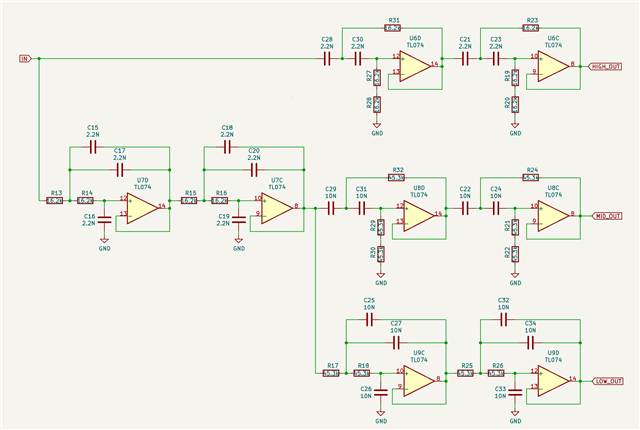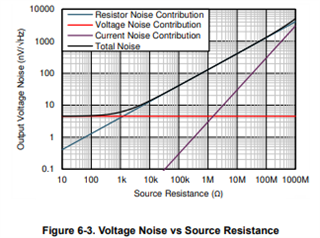Other Parts Discussed in Thread: OPA1679, OPA1604, , OPA1678, OPA1656, TL074
I have developed a 3 band active audio filter, and I want to experiment with different op-amps to optimise the noise level.
I have skimmed through TIPD134 and it seems like input noise voltage (nV/√Hz) is the main parameter to consider when selecting for noise. So I am considering OPA1604 and the lower cost OPA1679
Is there something else I should consider (besides having a high enough slew rate) for this design? Unfortunately lowering the resistor values is not an option.
Each of the three outputs drives a 20kΩ load.



